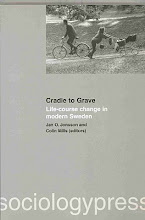I spent a significant part of last week meeting my new graduate advisees or supervisees as we call them over here. It brought to mind Burn's couplet: O wad some Power the giftie gie us/ To see oursels as ithers see us!
When I was an undergraduate I thought one of my tutors - it was the sort of college that aped a shabby form of Oxbridge tutorial - was truly marvellous. Every two weeks I wrote an essay and we met to discuss it. Actually I have no recollection whatsoever of the discussion and the relics - a few dog-eared pages with the odd tick, question mark, and fussy remark about the inadequacy of my referencing - contain few clues as to how we spent the time.
When I was an undergraduate I thought one of my tutors - it was the sort of college that aped a shabby form of Oxbridge tutorial - was truly marvellous. Every two weeks I wrote an essay and we met to discuss it. Actually I have no recollection whatsoever of the discussion and the relics - a few dog-eared pages with the odd tick, question mark, and fussy remark about the inadequacy of my referencing - contain few clues as to how we spent the time.
I doubt that I had much to say for myself as I came from a home where idle speculation about things one knew nothing much about wasn't a valued pastime. My naive belief was that the assiduously quarried nuggets on the page spoke for themselves.
My only real memory is of awe at being allowed into the presence of one so obviously eminent and kindly - my tutor rang me up after I had gone AWOL a few weeks before exam time to make sure I hadn't hung myself from Blackfriars bridge. In fact I just wanted to be left in peace to sit in the library and read according to my own lights.
A decade or so later I was on the faculty and my old tutor was a colleague. But surely this wasn't the person I remembered. Hadn't I noticed that they were an egotistical bully whose main interest was in the maintainance of a self-aggrandising cult? The oracle was gone and in its place was a tedious bore portentously repeating the blindingly obvious to a crowd of adoring groupies.
Had my old tutor changed? Probably not. The difference was that the angle I now observed them from cast a crueler light and revealed the feet of clay. The public side of academic life has, like many professions, more in common with acting than we care to acknowledge. But it is chastening to realise that insofar as it is an act eventually somebody will see through it.
My only real memory is of awe at being allowed into the presence of one so obviously eminent and kindly - my tutor rang me up after I had gone AWOL a few weeks before exam time to make sure I hadn't hung myself from Blackfriars bridge. In fact I just wanted to be left in peace to sit in the library and read according to my own lights.
A decade or so later I was on the faculty and my old tutor was a colleague. But surely this wasn't the person I remembered. Hadn't I noticed that they were an egotistical bully whose main interest was in the maintainance of a self-aggrandising cult? The oracle was gone and in its place was a tedious bore portentously repeating the blindingly obvious to a crowd of adoring groupies.
Had my old tutor changed? Probably not. The difference was that the angle I now observed them from cast a crueler light and revealed the feet of clay. The public side of academic life has, like many professions, more in common with acting than we care to acknowledge. But it is chastening to realise that insofar as it is an act eventually somebody will see through it.









